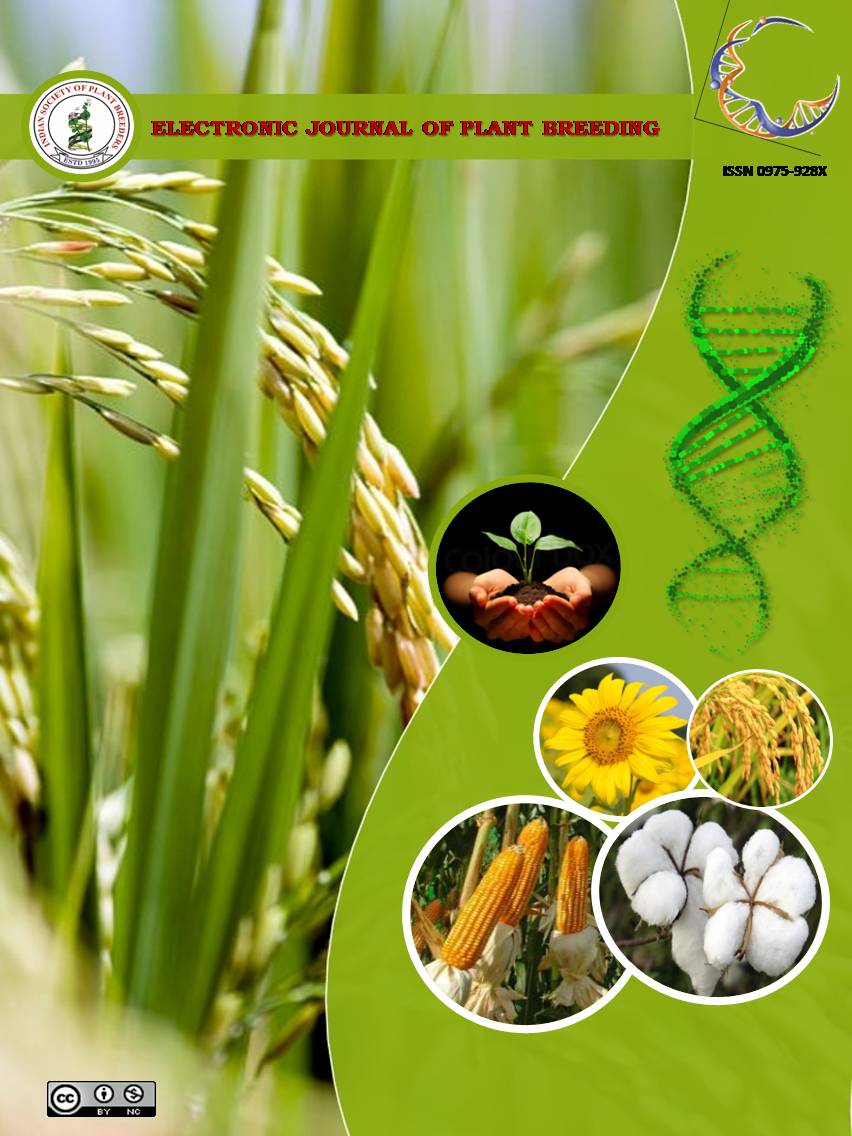Estimation of heterosis for yield related traits and grain Zinc in rice (Oryza sativa L.)
Abstract
The experiment consists of thirty hybrids generated in a Line x Tester mating design by crossing six lines with five male parents and studied along with two checks (BPT5204 and DRR dhan-45) for 16 characters contributing to yield and grain Zn content in rice. Analysis of variance exhibited significant differences among the genotypes for all the traits under investigation indicating the presence of sufficient variability in material and can be exploited. Among all the crosses, the hybrid, HUR-3022 x Dudhkander exhibited the highest significant positive heterobeltiosis for the number of effective tillers (91.94%), the number of grains per panicle (16.44%), 1000 grain weight (26.28%), grain yield per plant (214.03%) and biomass (225.12 %). HUR-3022 x Sathi exhibited the highest positive better parent heterosis for grain Zn content (38.37%). Standard heterosis over checks BPT-5204 and DRR dhan-45 of 214.03 and 40.07 per cent respectively, were exhibited by the cross, HUR-3022 x Dudhkander for yield plant per plant HUR-3022 x Sathi exhibited the highest positive economic heterosis of 69.42 and 60.26 per cent over BPT-5204 and DRR dhan45 for grain Zn, respectively. Hence, these two hybrids viz., HUR-3022 x Dudhkander and HUR-3022 x Sathi can be exploited in breeding hybrids for high yield and high grain Zinc with further evaluation in multiple locations.

